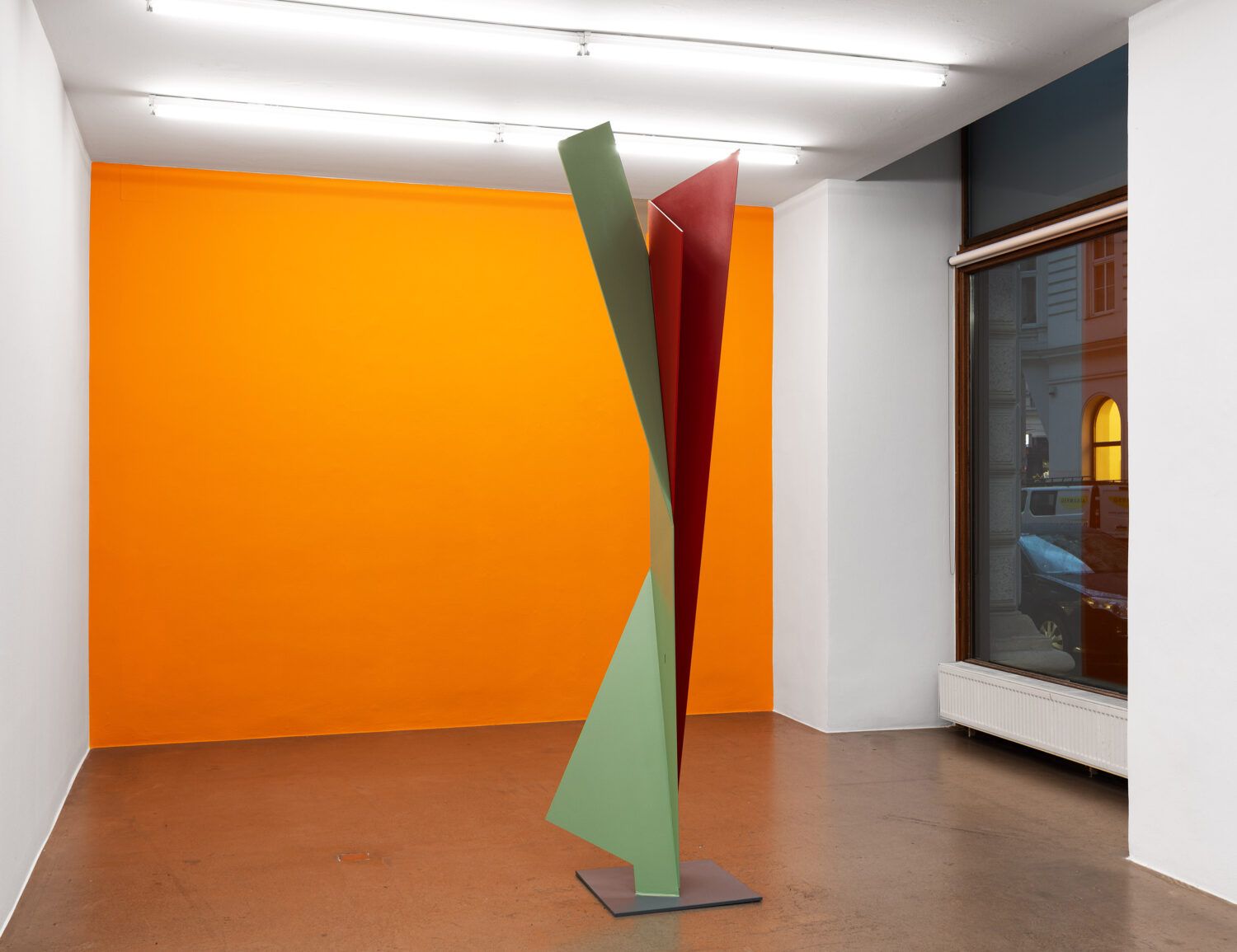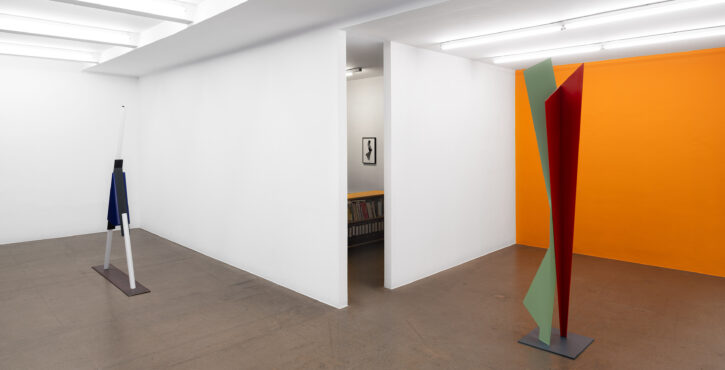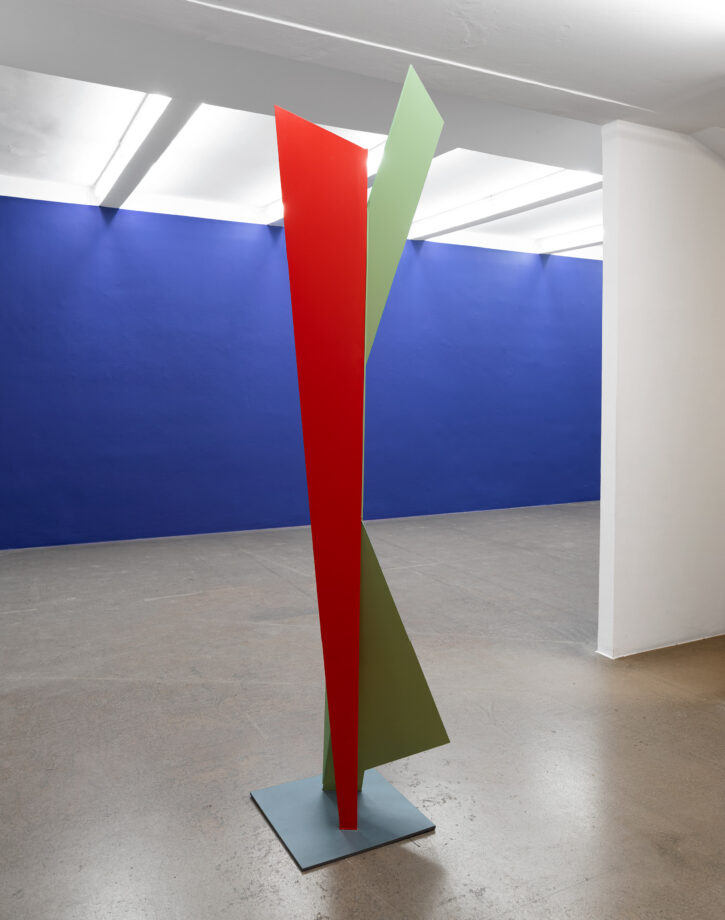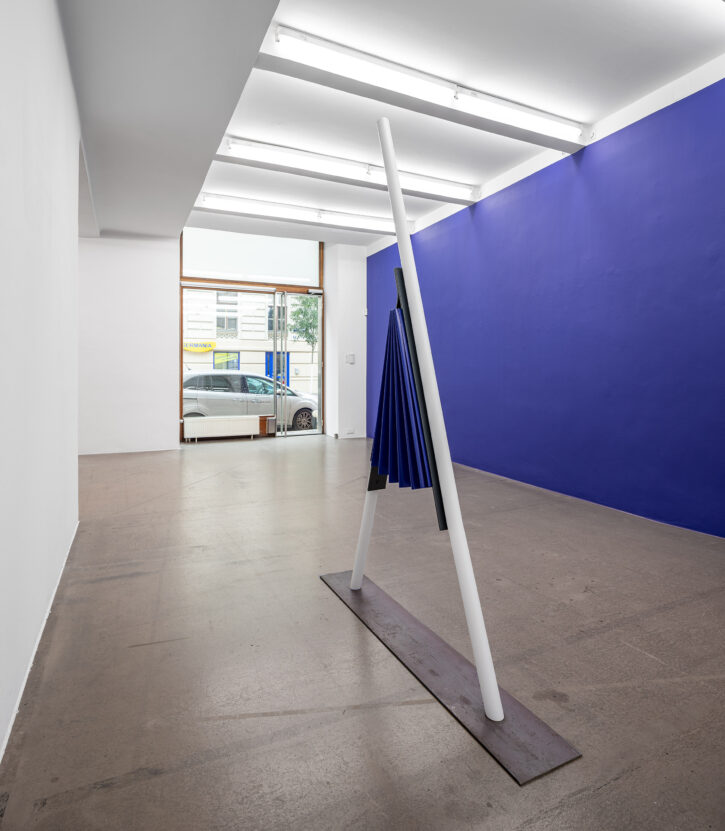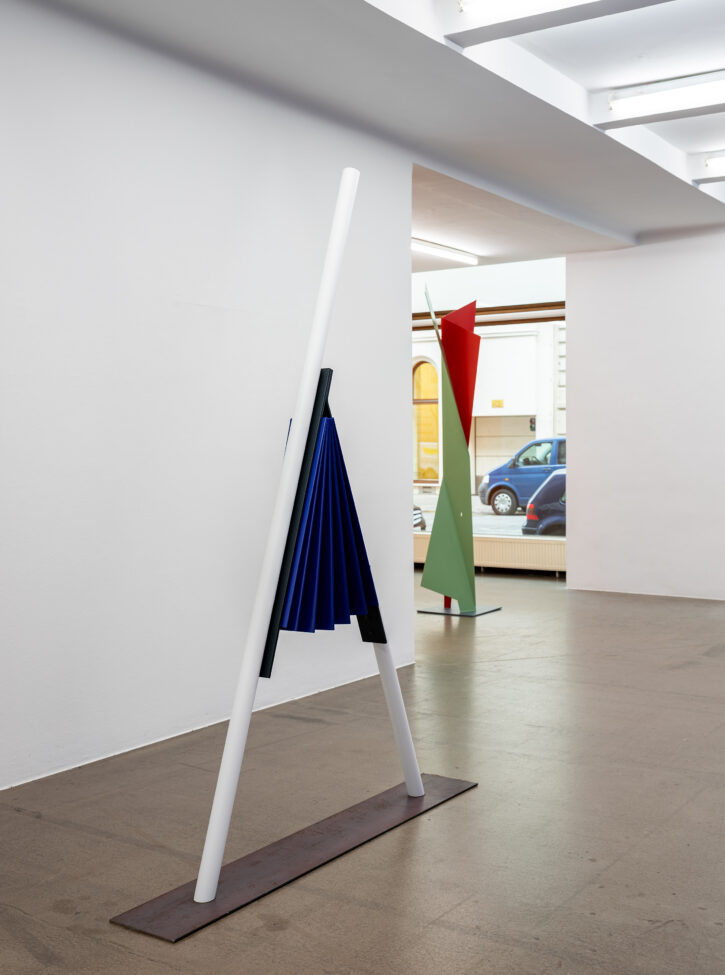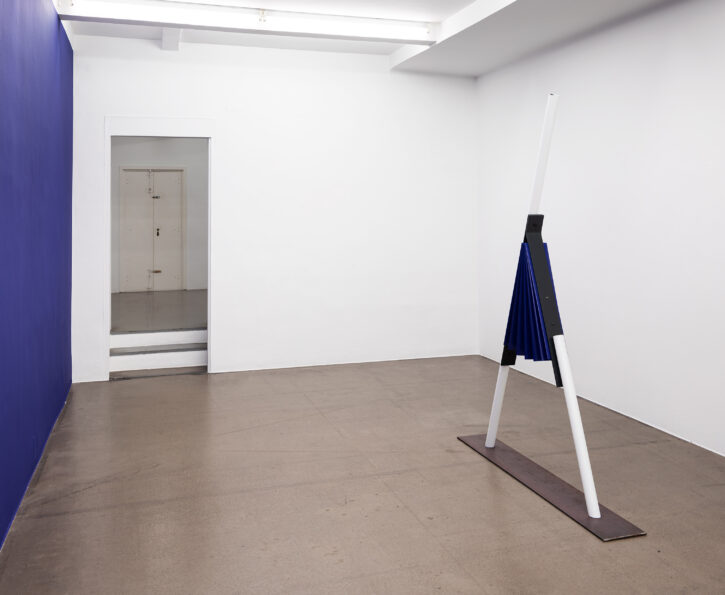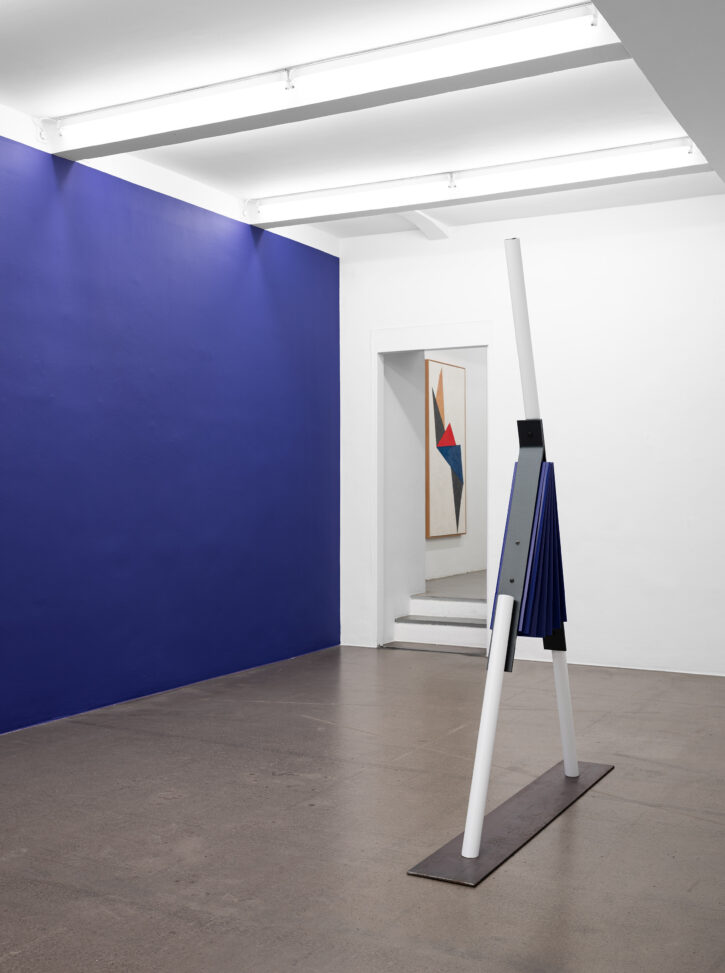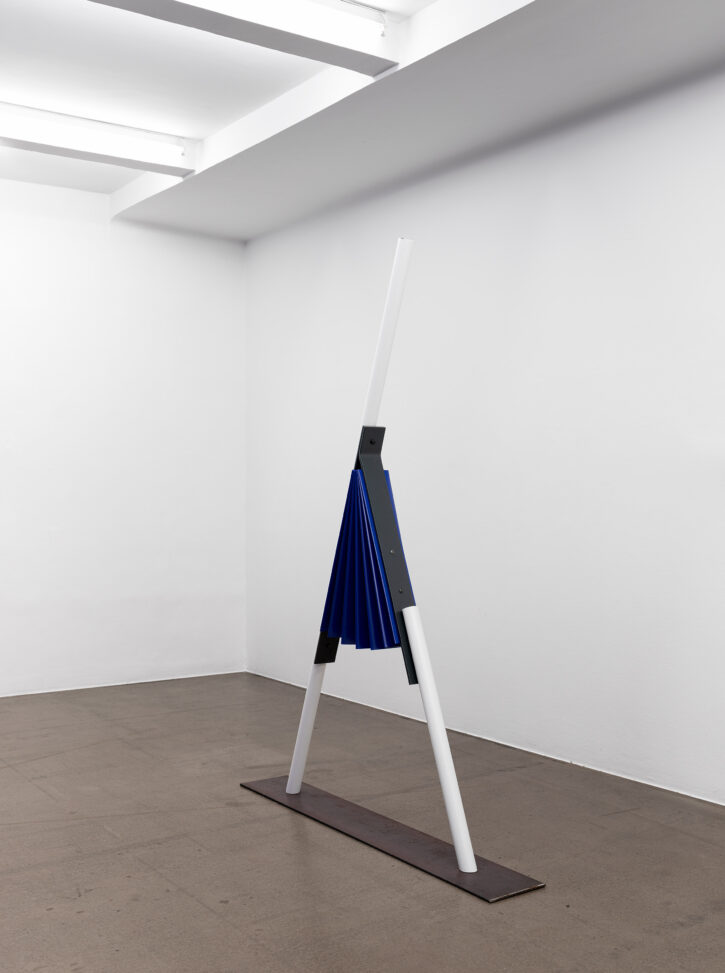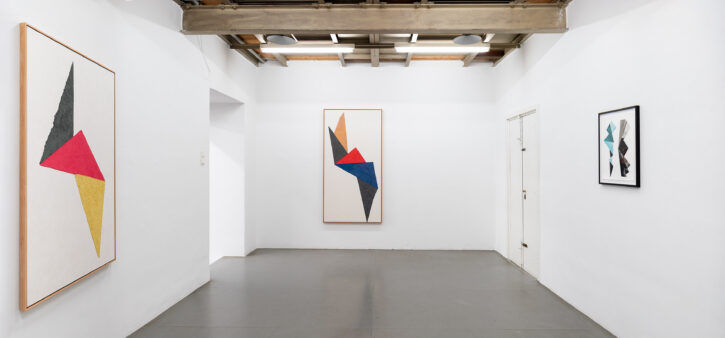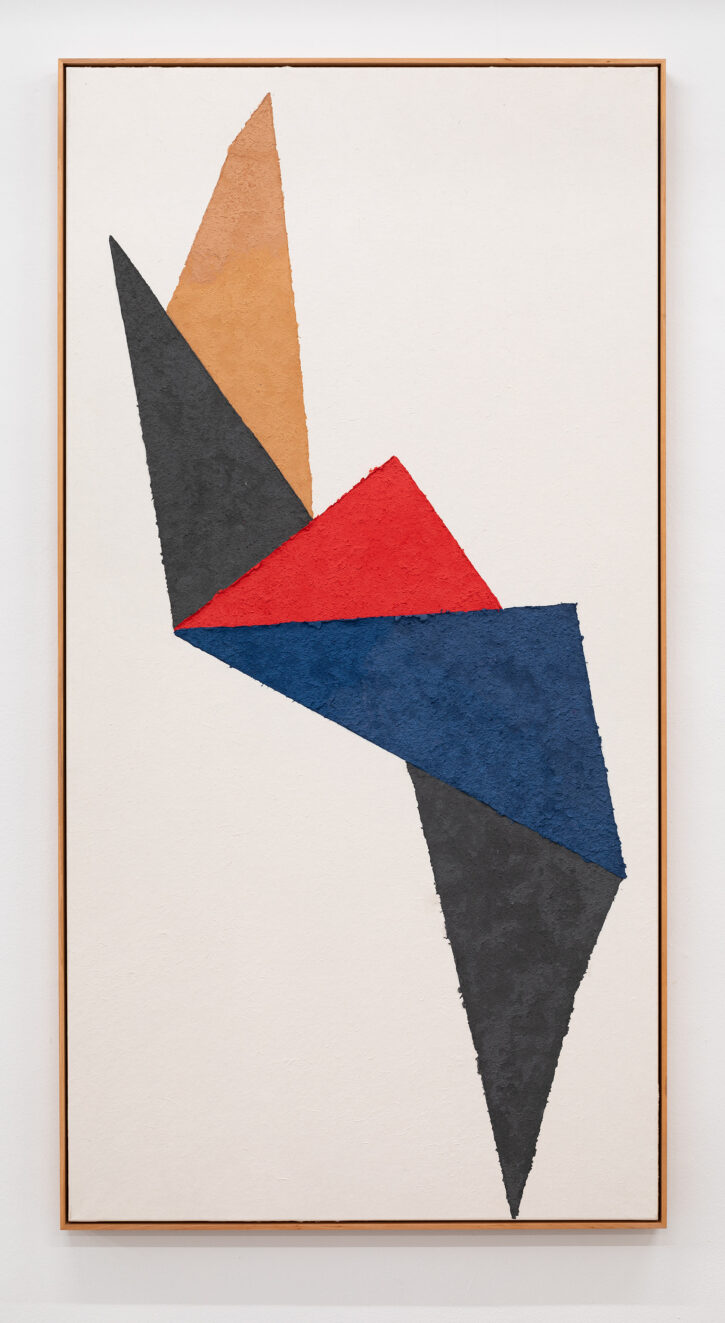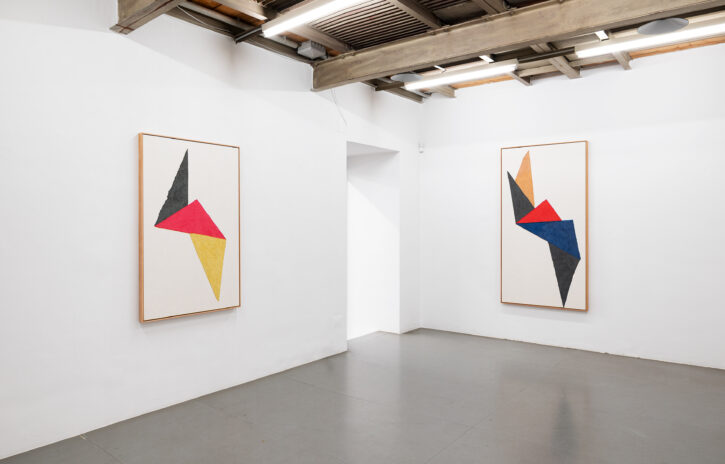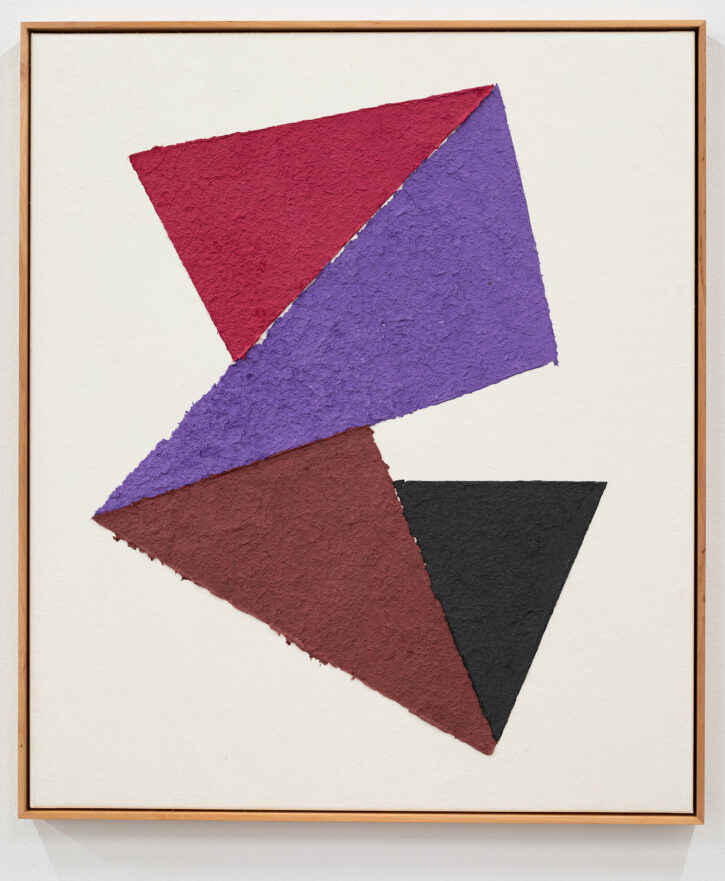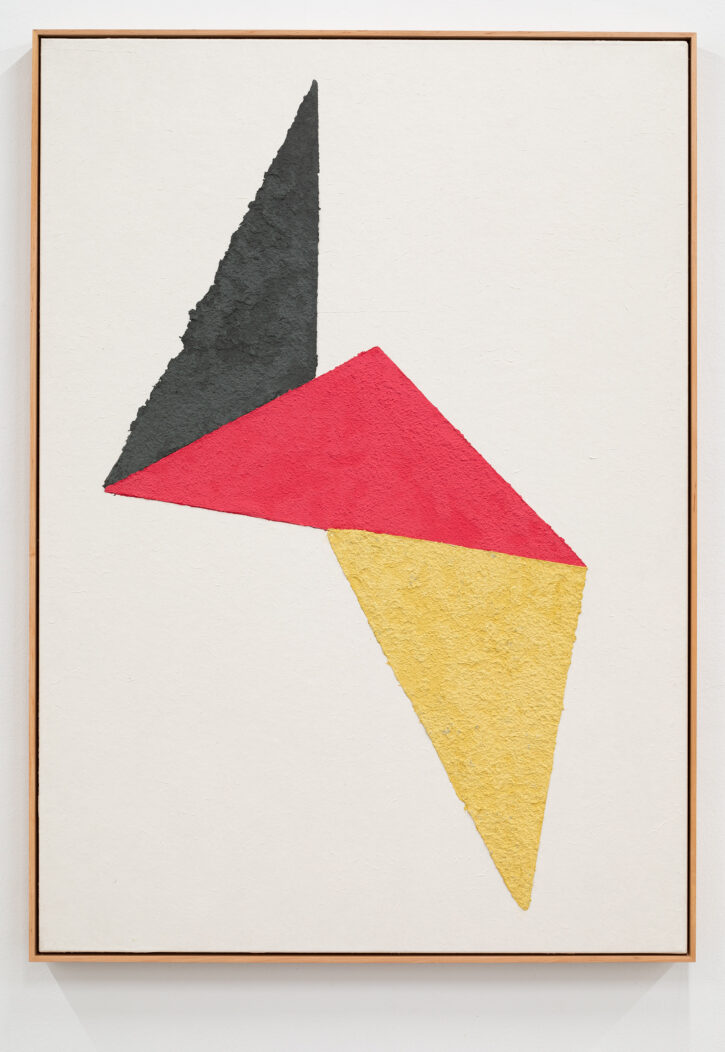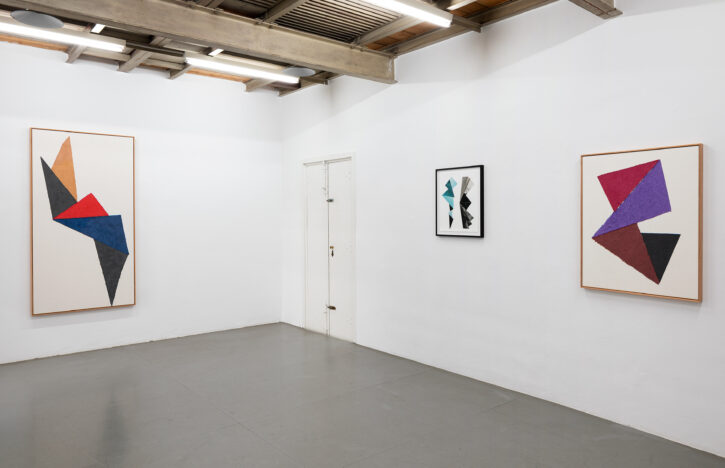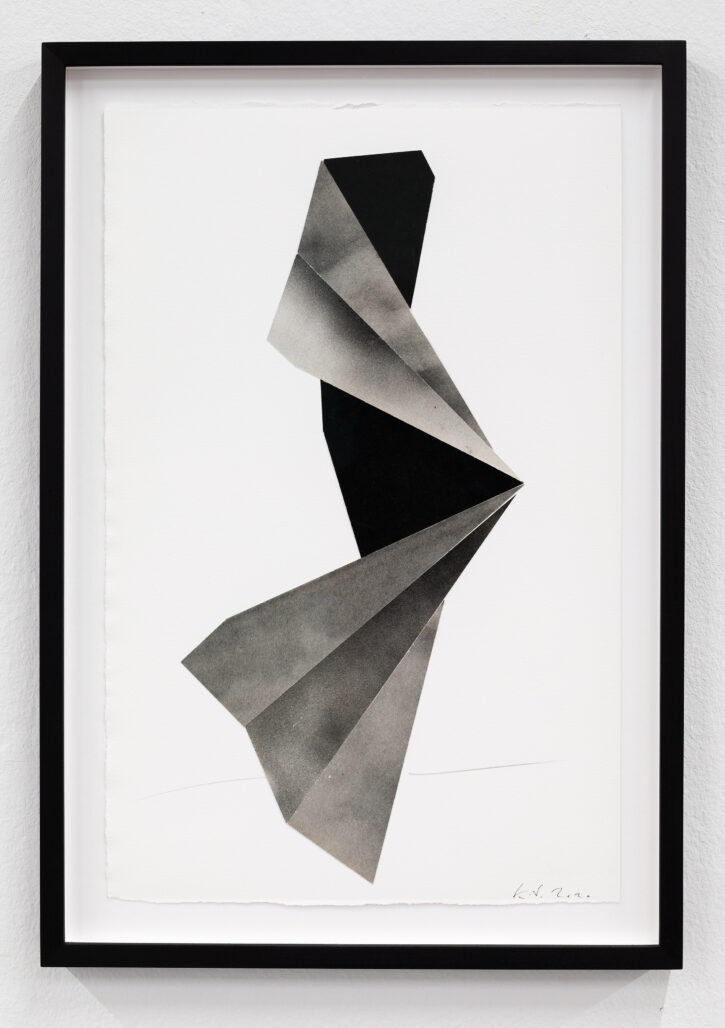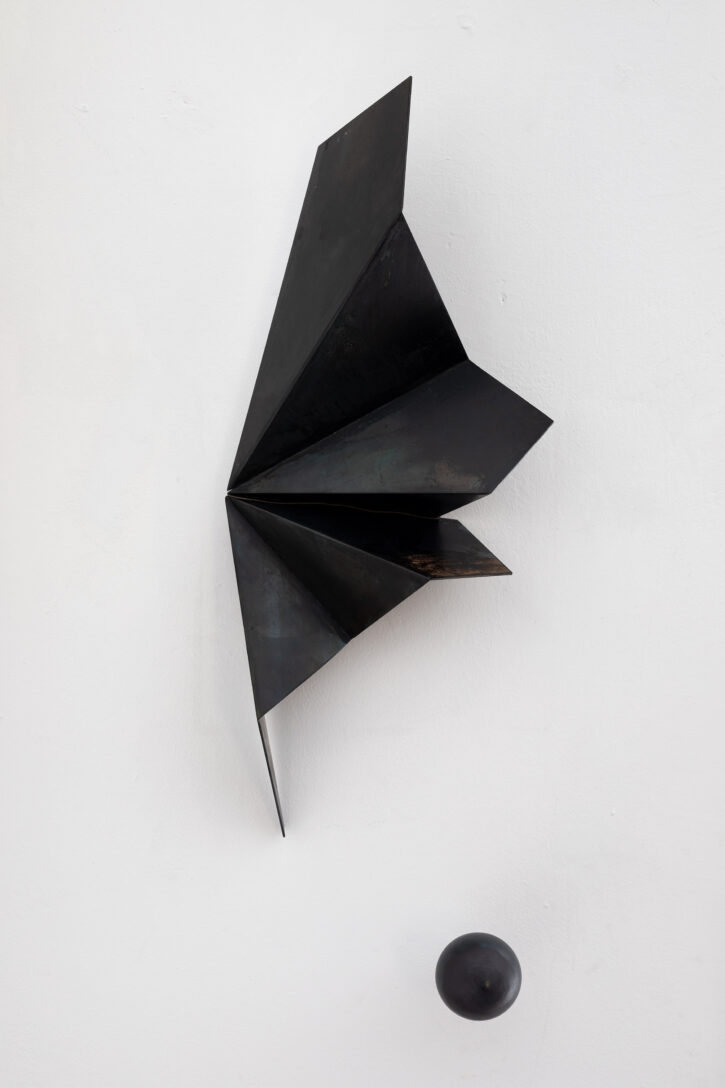Katja Strunz
About the exhibition
We are experiencing a “brittle present,” ¹ to use Hans Ulrich Gumbrecht’s formulation, in which traditional certainties and world views are falling apart, and newvisions of the future have yet to be developed. The constructs of time and world are out of joint: it appears the past has not irrevocably passed, and the present islimited to expectations of imminent catastrophes, whether planetary-ecological or political-martial. This atmosphere of perpetual crisis, discontinuity, temporal stumbling, and repeats is the location of artist Katja Strunz’s most recent works now on display under the title Time Enclosed. (2)
Katja Strunz: “The enfolding of the material in my work signifies a collapse of Here and There, of Then and Now, a posttraumatic contraction, where theexperience of physical space shrinks. In my past work and exhibitions, shapes of falling and enfolding, of collapse, shrinkage, the sites of collapse, and fragmentations are foregrounded.
The exhibition Time Enclosed revolves around unfolding and lingering moments, and refolding, along with its concomitant transformation.” ²
Are We Enfolding or Going to Unfold is the title question posed by one of the works. Through its blue coloring, it establishes a connection to the exhibition roomwall behind it. Leaning into each other, two stelas on a metal square plate rise from the floor; they are supported by a pleated piece of metal that, in the shape ofa fan, fills the space between the stelas. The structure seems to be poised between movements, the metal fan between the stelas remaining static betweenopening and closure, between taking up space and enfolding.
Katja Strunz: “The sculpture Are We Enfolding or Going to Unfold depicts the transformative process between enfolding and unfolding. It reflects the scale of thatpath as enfolding and contraction and as unfolding and expansion in space. In trauma therapy, contraction and expansion go through cycles in the nervoussystem: Peter A. Levine talks about the site of collapse in trauma, which leaves behind a traumatic vortex that is experienced in cycles of contraction and expansion. The perception of this sets the direction. ³
Are We Sinking? Or Are We Going to Rise? is a question currently posed by Otto Scharmer in his essay “Protecting The Flame: Circles of Radical Presence in Times of Collapse.” In search of transformation, the sculpture is seeking a form. It is about Letting Go and Letting Come, about the spark of the new—and it isabout, as Otto Scharmer puts it, presence in times of collapse. The movements in the work-cycle The Three Sparks are slowing down. To the colorfulness of thework, an emotional expression is added, that connects, as part of the creative process, the effective forces of the unfolding.“ ⁴
In Katja Strunz’s current artistic examination, the future emerges as an interrogating authority. Motifs like folding, the nestling of space and time, that can beinterpreted as a symbol of the past irrupting into the present, remain returning motifs. Yet in her new work, they are not only the scattered entanglements of pastand present but possibilities of the future’s unfolding. They are being interrogated regarding the creation of a modifiable space for possibilities that lies ahead,aligned with Ernst Bloch’s principle of hope: hope as powerful, utopian potential able to overcome unspeakable, inexpressible traumas to let time that has beenenclosed, flow again.
Katja Strunz: “The forms—in leaning against the folding—represent the transition of time, the complexity of a human existence that, over time, manifoldsperpetually in a rhythm of enfolding and unfolding. ⁵
Strunz poses questions about the possibilities of opening and closing time and space, about interactions with an enclosed time that has been snatched from theeternally continuous timeline of chronological thinking and kept behind locked doors in an intermediate state outside of the fundamental space-time continuum ofhuman thought and action. What emerges here is the connection between time and experience, time and corporeality, time and space. How can we imagine a space that has locked away time? As a room with bolted doors? As a moment of safety, protected from external interferences? How can space and time beopened and closed? Preoccupied with enfolding and unfolding, the work is reminiscent of a dialectical historical development, where margins of play alternatebetween opening and closing themselves to possibilities, i.e. moments of freedom and constraint. In her sculpture as well as in her work on paper, Katja Strunz captures movements that can be located between ascension and descent, between opening up and closing off, moving on and looking back. Rather than just exemplifying fractures, her work casts a careful glance ahead, to a nascent world.
Katja Strunz and Luisa Heese
Translation: Dr. Mandana Taban
Katja Strunz und Luisa Heese
Otto Scharmer ist Ökonom und Aktionsforscher am MIT Cambridge. Sein Aufsatz Protecting The Flame: Circles of Radical Presence in Times of Collapse erschien am 07.09.2022 auf seinem Blog: Field of The Future.
Peter Levine ist amerikanischer Biophysiker, Psychologe und Psychotraumatologe. Das Zitat entstammt dem Buch Trauma-Heilung, erschienen 1997 bei Synthesis, S.191-200.
Katja Strunz, * 1970, D. Lebt und arbeitet in Berlin.
Luisa Heese, * 1984, D. Direktorin des Museums im Kulturspeicher, Würzburg.
¹ Hans Ulrich Gumbrecht, Brüchige Gegenwart. Reflexionen und Reaktionen, Stuttgart 2019
² Katja Strunz, eingeschlossene Zeit, 14.10.2022
³ Peter A. Levine, Trauma-Heilung, Unsere Fähigkeit traumatische Erfahrung zu transformieren, Synthesis 1997, S.191-200.
⁴ Katja Strunz, eingeschlossene Zeit, 14.10.2022
⁵ Ebd.
Further informations:
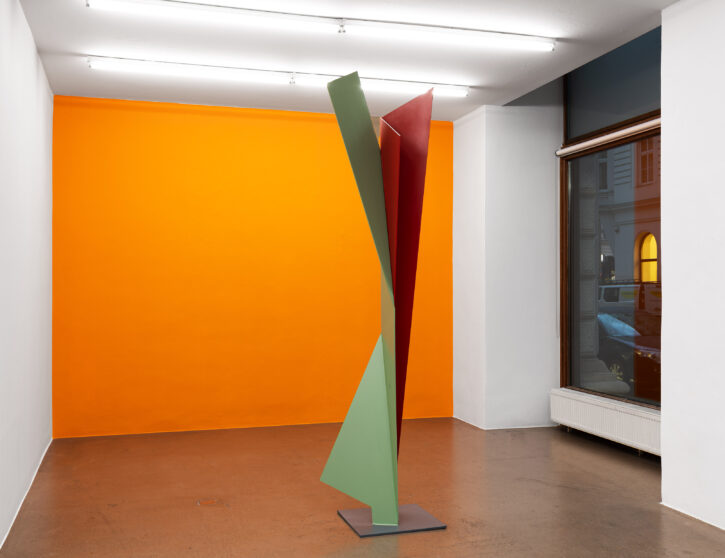
Gilded Palace of Sin, 2022. Stahl lackiert / Painted steel 265 x 65 x 50 cm. Unikat/unique.
Foto Rudolf Strobl.
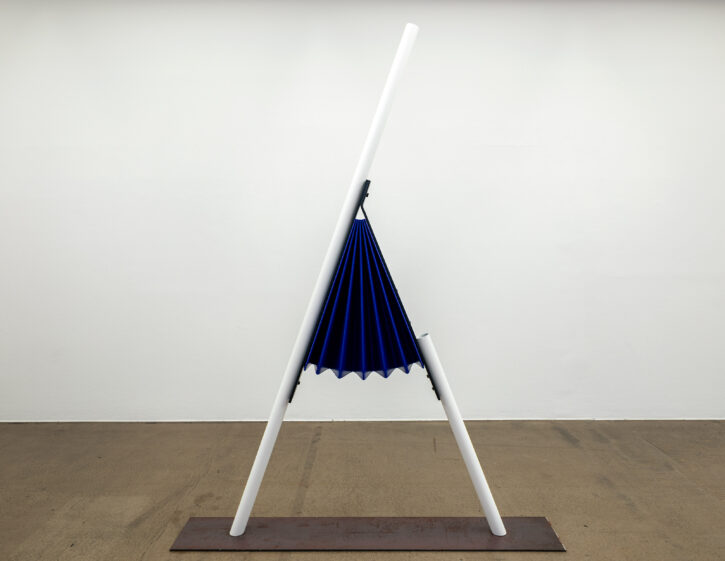
Are We Enfolding or Going to Unfold, 2022. Pulverbeschichteter Stahl / Powder coated steel 229 x 170 x 25 cm. Unikat/unique
Foto Rudolf Strobl
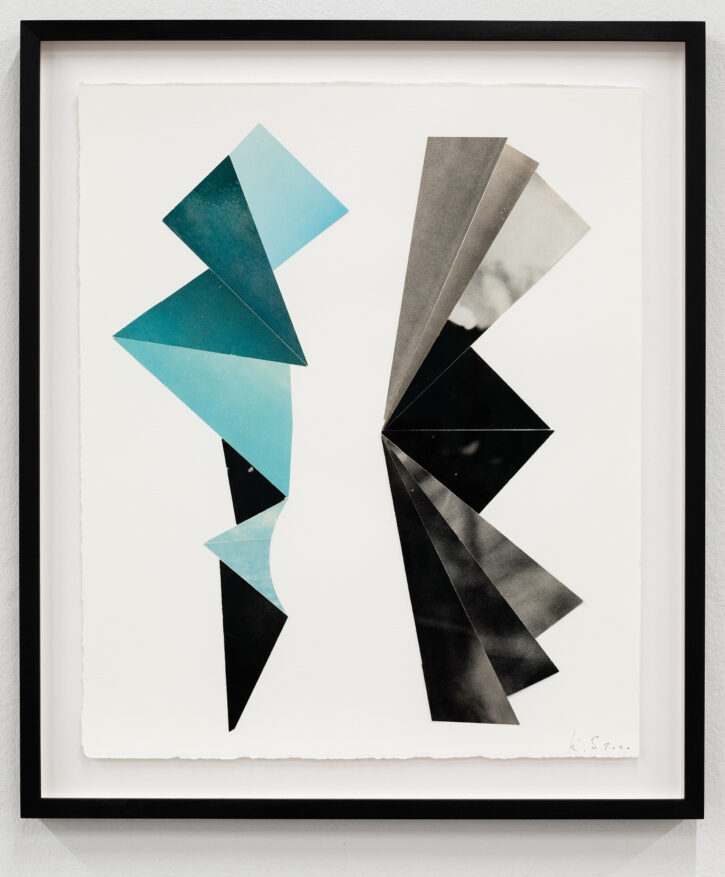
Zwei Funken, 2022. Collage auf Papier / Collage on paper. 51 x 41 cm. Rahmen / Frame 60 x 50 cm. Unikat/unique
Foto Rudolf Strobl.
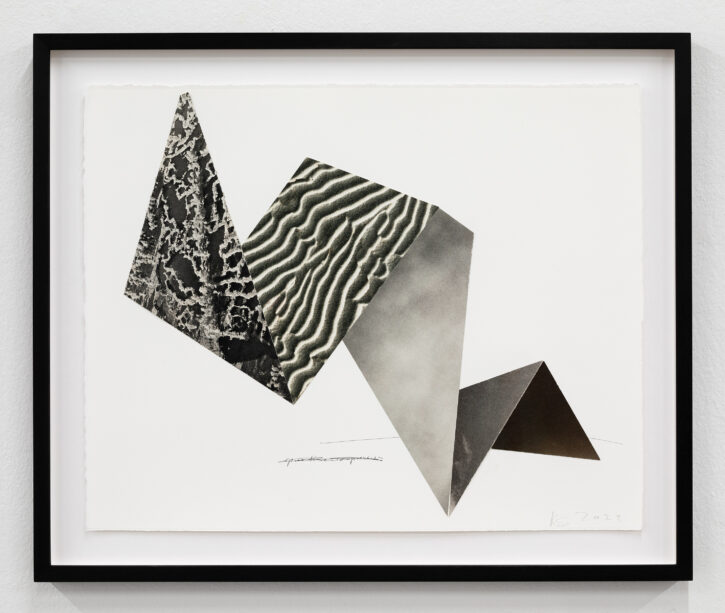
Spacetime Compression, 2022. Collage auf Papier / Collage on paper, 41 x 50,5 cm. Rahmen / Frame 35,1 x 50,6 cm. Unikat/unique
Foto Rudolf Strobl.
